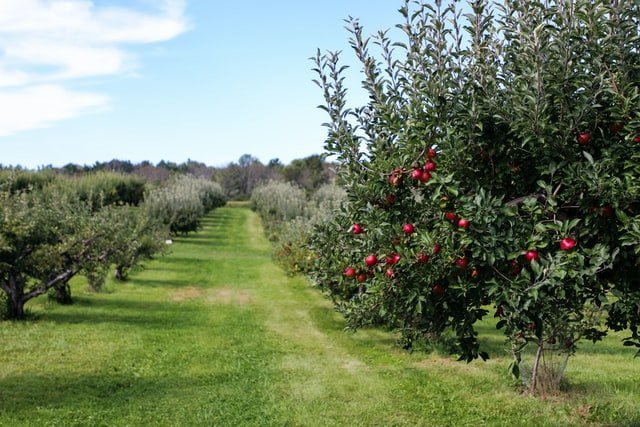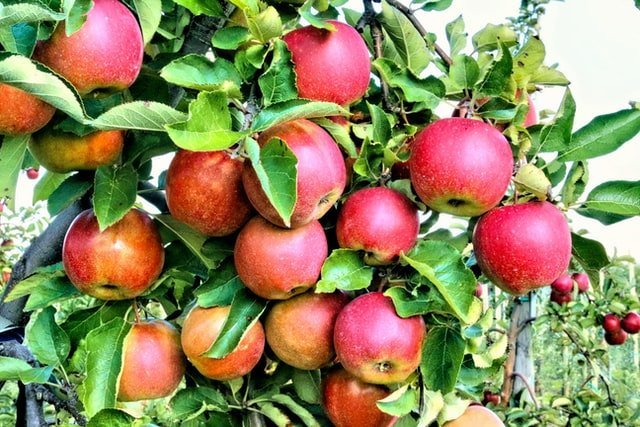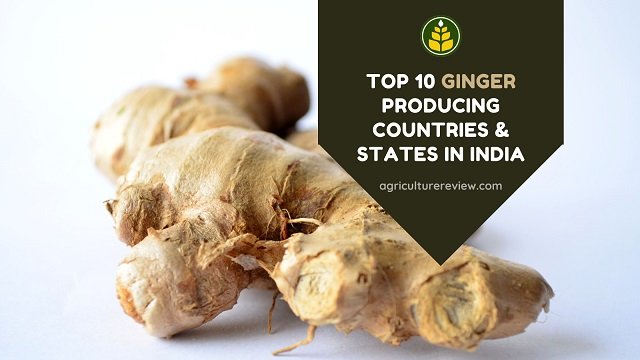This ultimate guide on apple farming will guide you in cultivating and harvesting apple in your apple farm. Get to know variety, fertilizers, plantation, irrigation requirement of apple.
Apple farming is a an old established and profitable enterprise. On an average you can harvest 20,000 to 30,000 apples from one acre of apple orchard. Therefore there is a huge chances of earning good amount of profit from cultivation of apple.
But cultivating apple is not very easy like other crops. Just like Kiwi farming, it requires precise knowledge, investment and time. A newly planted apple orchard takes 8 years to give commercial yield. However once fruiting starts then it continues till 30 years.
Therefore investment in apple orchard is investment for securing future.
Aditya Abhishek
Table of Contents
Introduction
Apple or Malus domestica is an edible fruit and is cultivated worldwide for various purposes. The primary goal of the farmer is to get higher yield to get higher profits. Moreover farmer can also set up small scale enterprise to produce apple juice, jelly, jam, pie, etc. to increase income.
Commercially, apple is one of the most important temperate fruit. It is also the fourth among most widely produced fruits after banana, orange, and grapes in the world. So let’s now discuss the cultivation of apple in detail.
Origin Of Apple
Although the exact origin of apple is not clear yet. But the researchers believe that apple originated in Middle East around 4000 years ago. Later on it spread to Europe and other parts of the world.
Area & Production
Hard-effort of farmers result in production of 87,236,221 tonnes of apple per year in the world. China is the largest producer of apple in the world. It produces around 42,426,578 tonnes of apple every year. This is followed by United States of America that produces around 4,997,680 tonnes of apple every year.
China and USA contribute for more than 50% of the global apple production. Other apple producing countries are Turkey, Poland, India, Italy, Iran, Russia, France, Chile, Brazil, etc.
India ranks at 5th in apple production in the world. It produces around 2,316,000 tonnes of apple every year in the world.
You will also love reading them,
READ MORE: Detailed Guide On Farming Of Lavender
READ MORE: What Is Soil Classification & History
Apple Farming Guide

Soil Requirements
Well drained, aerated loamy soil that is rich in organic matter is ideal for cultivating apple. Apple tree loves soil pH range of 5.5 to 6.5. Avoid planting apple trees in waterlogged, soggy or compact soil.
Climate & Temperature
Apple is a temperate fruit crop that likes to grow in dry temperate areas. It requires temperature range of 21 to 24o Celsius during its growing season. You can cultivate apple at an altitude of 1,500 to 2,700 above mean sea level which experience 1,000 to 1,500 chilling hours.
(Chilling hours means that the time in hours for which the temperature should remain below 7 Celsius during winters.)
Well evenly distributed 100 to 125 centimetres annual rainfall during growing season is ideal for growth and fruiting. However, excessive rains and fog during fruit maturity phase can harm the production and quality.
Excessive moisture results in poor fruit quality, improper colour development, and increase chances of fungal spots on the surface. Therefore uneven distribution of rainfall can cause problems in apple production.
Varieties Of Apple
Cultivation of apple is mainly possible in Jammu & Kashmir, Himachal Pradesh, and Uttar Pradesh in India. Cultivars that you can cultivate in these places are given in this table.
| State | Cultivar |
|---|---|
| Jammu & Kashmir | Benoni, Irish Peach, Cox’s Orange Pippin, Ambri, White dotted Red, American Apirouge, Red Delicious, Golden Delicious. |
| Himachal Pradesh | Tydeman’s Early, Mollies Delicious, Starkrimson, Starking Delicious, Red delicious, Richared, Granny-Smith, Red Spur, Top Red, Red Chief, Oregon Spur, Golden Spur, Michal, Schlomit. |
| Uttar Pradesh | Early Shanburry, Chaubattia Princess, Fanny Benoni, Red Delicious, Starking Delicious, Rymer, Buckingham. |
In recent years, many farmers have started cultivating apple in warm climate too. However you can not grow most of the cultivar in warm regions as they require at least 1000 chilling hours to perform well.
But, you can cultivate Anna, Dorset Golden, Hariman or HRMN-99 varieties of apple in warm regions. This is possible because these varieties only require 150 to 200 chilling hours and can survive even in temperature up to 45 degrees Celsius.
Planting Season & Material
Early spring season, i.e. usually from late January to February is the best time for propagation and plantation of apple trees. You can propagate apple tree by grafting, budding, or rootstocks.
Budding and tongue grafting are common methods for propagation of apple. If you are not propagating yourself then purchase propagating material only from the trusted agriculture stores.
Budding
T-budding or Shield budding is a common practice that farmers use for propagating apple trees by budding. You can practice budding during active growing season i.e. during summers.
For T-budding, cut a single bud with shield piece of stem along with scion and insert it beneath the rind of the rootstock. For this perform a T-shaped incision on the rind of the rootstock.
Grafting
You can practice whip or tongue, cleft, or roots grafting during early spring season for propagation of apple. Practice tongue grafting at 15 centimetres above the collar for best results.
Planting Method
This is one of the most crucial step after propagation of apple for successful apple farming. If you are planting apple in valleys then you can try square or hexagonal system of planting but on the slopes you can try contour planting method.
For proper fruit set, plantation of pollinator species between main species is necessary. For two to three large trees planted at 10 metres distance one pollinator tree is good for enhanced pollination. Or you can also plant one row pollinator for two rows of main species tree.
Prepare pits of size 1×1×1 metres depth during late fall or October to November for plantation. Mix 30 to 40 Kilograms of organic manure or Farm Yard Manure and 500 grams of single super phosphate. After mixing properly add malathion dust. Fill all the pits with this mixture and do plantation after one month.
Irrigate the orchard immediately after apple tree plantation.
Spacing
In one hectare of land you can plant around 200 to 1,250 apple trees. Depending on the variety and region you can try any one of these spacing methods:
- Low Density Plantation: You can plant around less than 250 apple plants per hectare.
- Moderate Density Planation: You can plant around 250 to 500 apple plants per hectare.
- High Density Plantation: You can plant 500 to 1,250 apple plants per hectare.
- Ultra High Density Plantation: You can plant more than 1,250 apple plants per hectare.
Fertilizers
You can apply 10 Kilograms of Farm Yard Manure per year age of tree for proper growth and development. Along with FYM also apply 350 grams of nitrogen, potassium, and 175 grams of phosphorus per apple plant per year in split dozes.
You can also apply jeevamrut or waste decomposer time to time for increased leaf size and plant protection.
Irrigation
Apple tree requires 114 centimetres of water annually. In a year apple orchard will require around 15 to 20 irrigations to fulfil its water needs. During summers irrigate at an interval of 7 to 10 days but during winters irrigate at an interval of 3 to 4 weeks.
Both excess or less moisture content in the soil can harm apple production. Fruit size and quality decreases due to water stress in active growing season. Therefore it is necessary to meet water needs of the tree to get good quality apple fruits.
Training & Pruning
Training and Pruning of apple tree timely is necessary for proper growth and productivity. Train apple trees according to the growth habit and vigour of the rootstocks. Training on modified central leader system is standard practice that allows trees to get proper sunlight.
Although you can also practice Spindle bush training system for high density planting. It will help to improve fruit colour and will minimize the harsh effects of heavy snowfall.
National Board Of Horticulture, India suggests that to maintain proper balance between vegetative growth and spur development, pruning is necessary. During pruning you should remove weak and diseased branches from the apple tree.

Pests & Diseases Of Apple
Apple can get affected from various pests and diseases that can reduce fruit quality and plant growth. Controlling them well in time is a necessary step. These tables given below will guide you in controlling pest and diseases of apple.
| Diseases Of Apple | Control Measures |
|---|---|
| Scab | Spray 0.1% Tridemorph before flowering, 0.25% Mancozeb at fruit bearing stage. |
| Powdery Mildew | Spray 0.05% Dinocap. |
| Fire Blight | Remove infected parts, spray Streptomycin 500ppm. |
| Soft Rot | Dip the fruits in Aureofunginsol 500ppm for 20 minutes. |
| Bitter Rot | Spray 0.25% Mancozeb. |
| Pests Of Apple | Control Measures |
|---|---|
| Woolly Aphids | Spray Dimethoate 30 EC 0.06%, and release parasitoid Aphelinus mali. |
| San Jose Scale | Summer spray with Phosalone 50 EC 0.05%, and winter spray with diesel oil emulsion at 8-12 l/ tree. |
| Codling Moth | Apply Virosoft CP4 Granulovirus, and Spray 0.04% DDVP. |
| Cottony cushion scale | Spray 2% neem oil, or 5% NSKE. |
| Stem Borer | Prune out the branches that contains Grub. |
Harvesting Of Apple
Apple trees will start bearing fruits from 8th year after plantation. This will continue till 30th year after plantation of apple trees. Generally after full bloom stage it will take around 150 days for fruits to mature. Depending on the cultivar the colour of the skin at maturity can vary.
You can harvest apple fruits when they are uniform, firm, and crisp.
Yield Of Apple
Depending on the cultivar, region, and farming practices, on an average yield of apple can vary from 10 to 20 Kilograms per tree per year. You can harvest 11 to 20 tonnes of apple per hectare.
FAQ
In United States Of America, apples get ready for picking from late September to early October.
Apple tree loose their leaves every year, however during spring season, apple scab, a fungal disease could cause unnatural shedding of leaves. You can apply Mancozeb to control them.
Hand picking is the most common method of harvesting apples in the world, but new tools such as apple picker can be used to harvest apples.
‘Katy’ Apple grows best in USDA zones 5, 6, 7, and 8.
No one clearly knows who was the first apple farmer, but according to history records, apples originated in Kazakhstan, i.e., around middle East.






Highly useful information.Kindly keep it up.
With all regards.
Jai Parkash Sharma, Advocate
Thanks!
Good work. Adding information on Indian cultivars, especially the high temperature varieties and their availability would have made it better.
Thanks!
I have updated list of apple varieties that you can cultivate in India, after the list I have also mentioned names of apple cultivar that can perform well in high temperature too.
I hope this will help!
Very informative on each aspect.
Information about pest n insects control also required.
Thanks!
I have updated information on Pests and Diseases of Apple.
I hope this will help!
Good notes for apple farmers liked so much.